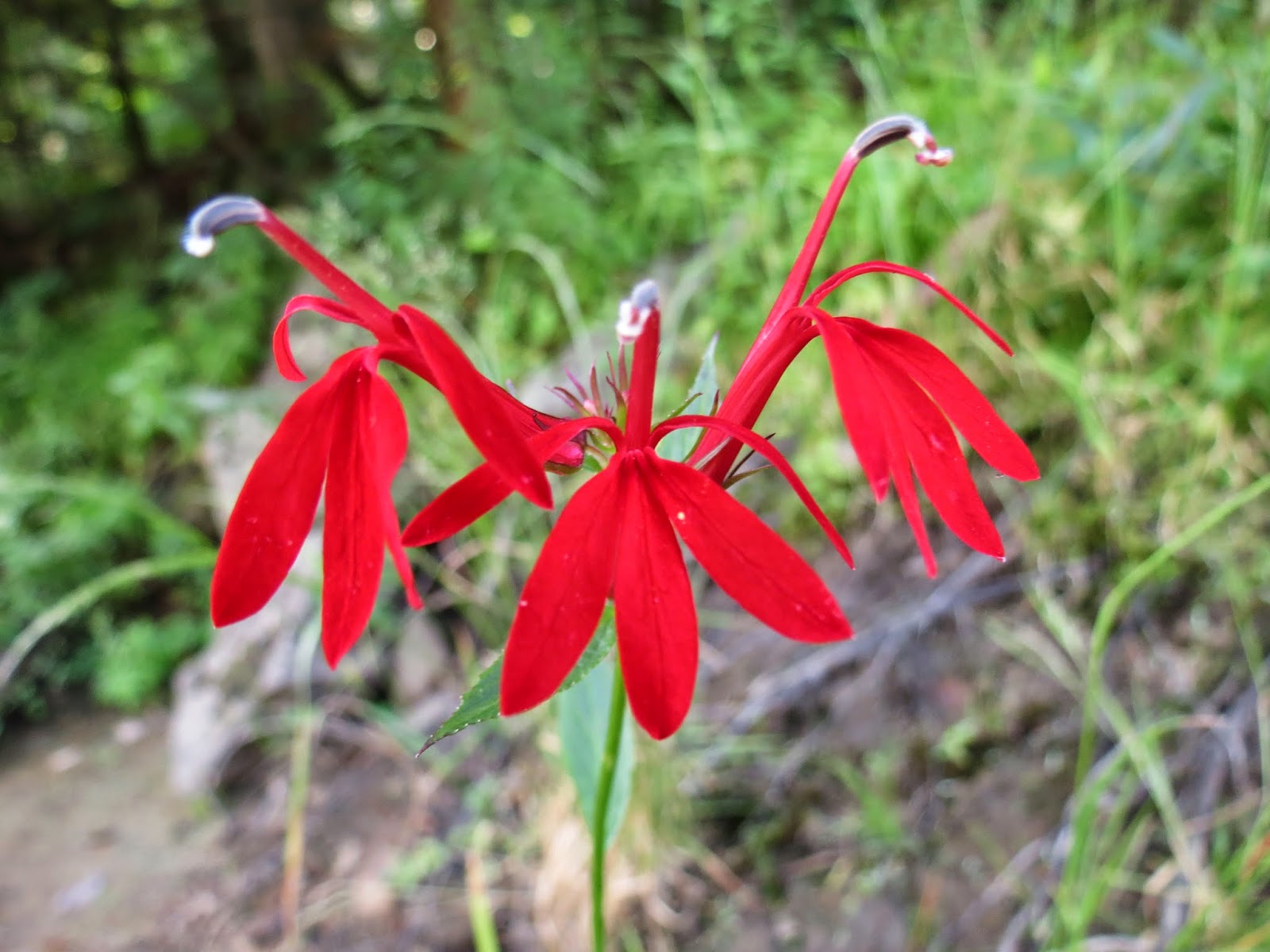Pink-edged Sulphur caterpillars eat blueberries, and so can be very common in dry open areas.
I was happy to come across this male Black-backed Woodpecker next to the trail while biking by. He seemed completely unconcerned about my presence. Black-backeds are at the southern limit of their range here in Algonquin.
Shrews are often found dead, presumably as predators kill them but soon discover they taste bad. I believe this is a Masked Shrew but it is difficult/impossible to tell without very close examination.
A wonderful surprise one evening was this hunting Great Gray Owl that we watched catch a Meadow Vole. Due to high numbers of Deer Mice and Eastern Chipmunks (and possibly other small rodents), it has been an incredible summer for owls. I've seen Great Gray, Barred, Northern Saw-whet, Long-eared and Great Horned within Algonquin so far.
This is Spilomyia fusca, a flower fly that is an incredibly good mimic of the Bald-faced Hornet.
Cardinal Flower is a common riverside plant.
Tiger Beetles are common on dry open areas in late summer, and are easily identified by the wing markings. This is a Bronzed Tiger Beetle.
This is an Oblique-lined Tiger Beetle.
Horned Bladderwort is a common shoreline species.
Purple Bladderwort is significantly less common in Algonquin Park. Bladderworts are carnivorous, with tiny bladders on their roots that trap tiny animals.
I believe this Buprestid beetle is a Hemlock Borer, Melanophila fulvoguttata. There were at least 10 of them on this single tree.
Common Ravens are typically extremely wary, so I took advantage of the tameness of this young bird as it fed on blueberries.
This big blister beetle (Meloe sp.) would give me some nasty blisters if crushed.
I was excited to discover this Many-plumed Moth (Alucita sp.) resting on a window. Although, like all insects, it does not have more than 4 wings, each wing is divided into many feather-like plumes.
Algonquin Park is usually an awful place to see shorebirds, so we travelled to Presqu'ile Provincial Park on Lake Ontario one day to see what we could catch up with. We had twelve species (all reasonably common ones), including my first Baird's Sandpipers of the year. By this point in the year, juvenile shorebirds like this Semipalmated Plover (aged by the pale fringing on the back feathers) begin to dominate over the earlier migrating adults.
















A nice collection of photos as the summer winds down.....
ReplyDelete